Artist Jeff Koons Presents His Cracked Egg Sculpture at the Pinchuk Art Center in Kiev
Jeff Koons - Cracked Egg, 1994-2006. Courtesy PinchukArtCentre. Photo by Markus Tretter
KIEV.- The PinchukArtCentre presents a major international group exhibition with 19 leading artists of our time, devoted to Sexuality and Transcendence as a central theme of contemporary art. On view from April 24, 2010 through September 16, 2010 the exhibition examines the diversity and complexity of the art produced on this theme today.
The show displays the sparkling dialogue of various artistic approaches in the tension field between the two extremes of raw sexuality and a sublime transformation into transcendence.
Featuring loans from both artists’ studios and private collections the exhibition includes nineteen major work groups with a total of 150 individual works in twenty rooms on four floors of the PinchukArtCentre. Many works have never been shown publicly before.
The staircases of the building are used as art spaces for the first time with installations by Jenny Holzer. In addition, for the first time ever, the PinchukArtCentre utilised the historical Bessarabskiy market hall located opposite for an eighty-meter-long frieze by AES+F.
Inspired by the great affinity to the exhibition theme and for the PAC as a leading institution for contemporary art all of the artists created special contributions partly in the form of new productions, of a special reappraisal of existing works or the selection of rare most recent work groups that have never been displayed as part of a major international exhibition.
Jeff Koons’ Balloon Rabbit a monumental sculpture from his famous celebration series will has his world premier at the PAC together with other key works created over twenty years.
‘Sexuality combines the idea of a world of subjective emotional references, a world of the instant, of anticipation, of desire and becoming and of orientation and disintegration as well as the extremes of destruction and violence. Sexuality is associated with an image of the real, of warmth and intimacy, whereas transcendence implies a world beyond reality. The concepts of spirituality and transformation predominate the latter, a sophisticated consciousness far from any purely subjective object-relatedness’ — Eckhard Schneider, the General Director of the PinchukArtCentre and the curator of the show.
The issue of sexuality and transcendence touches on a fundamental conflict in art in general because, beyond mere appearance, behind it hides the general question of the relationship between reality (life) and imagination (image). And so the relationship between form and vision becomes a crucial issue for any artist dealing with sexuality and transcendence. Which direction is a particular work going for? Does it answer the challenge with a praise of distance (form/transcendence) or with a demonstration of intimacy (life/sexuality)? The answers to these questions are so varied because, in addition to the paradigms inherent in the theme, the concept of desire is of central importance here. The general idea is kept open, both in respect of a desire for an ideal mental clarity, intellectual penetration and clarified form, and in respect of a desire for an ideal of realism, emotional directness and dissolution of form. Something Janus-like clinging to desire means that the two poles of sexuality and transcendence can be reflected within each other. The desire for the two things, sexuality and transcendence, dominates our existence; it is the driving force behind our earthly performance and, especially for artists, the search for an appropriate form.
The exhibition presents nineteen work groups with a total of 150 individual works in twenty rooms on four floors of the PinchukArtCentre. The staircases of the building are used as art spaces for the first time with installations by Jenny Holzer; the central stairwell features an in-situ piece with her famous texts from the series Inflammatory Essays and a second staircase houses a work with LED. In addition, for the first time ever, the PinchukArtCentre utilised the historical Bessarabskiy market hall located opposite for an eighty-meter-long frieze by AES+F, a group of artists from Moscow. With its intense sociocultural flavour and distinctive architecture, this historical site, which is of great importance for Kiev, provides an ideal public counterpoint to the artistic message propagating a new hybrid aesthetic of fusion.
Inspired by their great affinity for the exhibition theme and for the PinchukArtCentre as a leading institution in contemporary art, all of the artists decided to create some special pieces, partly in the form of new productions such as those by, amongst others, Anish Kapoor, AES+F, Cindy Sherman, Matthew Barney and Elmgreen & Dragset; of a special reappraisal of existing works by Paul McCarthy, Richard Prince, Boris Mikhailov and Takashi Murakami; or the selection of rare or recent work groups that have never been displayed as part of a major international exhibition before. These last include pieces by Louise Bourgeois, Hiroshi Sugimoto, Sarah Lucas, Annette Messager and Illia Chichkan. This allows the PinchukArtCentre exhibition to present arguments that are totally relevant to our own times.
Jeff Koons takes a key role in the exhibition with a comprehensive presentation of works from the last twenty years. Spread over three different floors of the PAC building, they form the backbone of the exhibition. A total of ten key works, six sculptures and four paintings from the series Made in Heaven, Celebration, Popeye, Hulk Elvis are on display. Highlights of this selection are the early icon Rabbit, the sculptures Cracked Egg and Blue Diamond from the Celebration series and the world premiere of the first version of Balloon Rabbit, an astonishing new creation, surely becoming an icon like his key early work. Koons’ contribution thus acts like a mini-retrospective on the theme that forms the core of his whole oeuvre, namely, the ambivalent relationship between sexuality and transcendence.
This is where the driving force behind Koons’ work has always been, especially when he transforms everyday objects into works of art by exaggerating brilliant surfaces, which then become both objects of trust and desire. This association of self-affirmation and acceptance in the reflection of one’s own desire for beauty and perfection defines Koons’ work as the perfect synonym for the ideal of a ubiquity of sexuality and transcendence.
Anish Kapoor - Untitled, 2010. Courtesy PinchukArtCentre. Photo by Markus Tretter
Anish Kapoor is a sculptor, member of the New British Sculpture group, born in 1954. He lives and works in London.
Over the past twenty years he has exhibited extensively all over the world. His solo shows have included venues such as Kunsthalle Basel, Tate Gallery and Hayward Gallery in London, Reina Sofia in Madrid, CAPC in Bordeaux and most recently Haus der Kunst in Munich. He has also participated internationally in many group shows including the Whitechapel Art Gallery, The Royal Academy and Serpentine Gallery in London, Documenta IX in Kassel, Moderna Museet in Stockholm and Jeu de Paume and Centre Georges Pompidou in Paris.
Left: Anish Kapoor - Untitled, 2010; Right: Anish Kapoor - In-Out Fractured Surface, 2009. Courtesy PinchukArtCentre. Photo by Markus Tretter
Anish Kapoor was awarded the ‘Premio Duemila’ at the Venice Biennale in 1990, the Turner Prize Award in 1991 and was awarded an Honorary Fellowship at the London Institute in 1997 and a CBE in 2003.
Anish Kapoor - In-Out Fractured Surface, 2009. Courtesy PinchukArtCentre. Photo by Markus Tretter
Annette Messager - A Corps Perdu, 2008-2009. Courtesy PinchukArtCentre. Photo by Markus Tretter
Annette Messager is a French artist who was born in 1943 in Berck-sur-Mer. She lives and works in Paris.
The artist is known mainly for her installation work which often incorporates photographs, prints and drawings, and various materials.
Annette Messager studied at the Ecole Nationale Supérieure des Arts Décoratifs, Paris. She won first prize in the Kodak Photography International competition in 1964. In 1995 the Los Angeles County Museum of Art and New York's Museum of Modern Art co-organized her first major American retrospective. She has had solo exhibitions at the major art institutions internationally, i.e. Mori Art Museum (Tokyo), Center Georges Pompidou (Paris), FRAC Picardie, Musée d’Art Moderne de la Ville de Paris, San Francisco MoMA.
She also exhibited in the Biennale de Paris (1977), Documenta VI (1977) and XI (2002), the Biennale of Sydney (1979, 1984, and 1990), the Venice Biennale (1980, 2003, and 2005), and the Biennale d'Art Contemporain de Lyon in 2000. She won the Golden Lion Award at the 2005 Venice Biennale.
Annette Messager - A Corps Perdu, 2008-2009; on the background: Annette Messager - Desir (2009), Sexe couche (Resting sex) (2010), Spaaasm (2010). Courtesy PinchukArtCentre. Photo by Markus Tretter
Cindy Sherman - Untitled (2010). Courtesy PinchukArtCentre. Photo by Markus Tretter
American photographer born on 19 January 1954 in Glen Ridge, New Jersey. She is based in New York.
Cindy Sherman - Untitled (2010). Courtesy PinchukArtCentre. Photo by Markus Tretter
Working as her own model, Cindy Sherman has developed an extraordinary relationship with her camera. A remarkable performer, Sherman is able to drastically manipulate her age and weight leaving the artist unrecognizable to the audience. Her works range from alarming and distasteful to amusing and poignant.
Cindy Sherman - Untitled (2010). Courtesy PinchukArtCentre. Photo by Markus Tretter
Shooting alone in her studio, Sherman acts as author, director, actor, make-up artist, hairstylist and wardrobe mistress. Sherman’s work has been widely collected and exhibited by major museums throughout the world since 1980 and is the subject of numerous monographs.
Elmgreen & Dragset - Perception II (2010). Courtesy PinchukArtCentre. Photo by Markus Tretter
Contemporary Scandinavian artists. Michael Elmgreen, born in Copenhagen and Ingar Dragset, born in Trondheim. They live and work in London and Berlin.
Elmgreen & Dragset - The Marriage, 2004. Courtesy PinchukArtCentre. Photo by Markus Tretter
Michael Elmgreen and Ingar Dragset have worked together as an artist duo since the mid-1990's. Major exhibitions include The Nordic and Danish Pavilions at the 53rd Venice Biennial in 2009, and the same year a survey show at MUSAC in León. The artist duo has also held solo shows at Serpentine Gallery in London; Tate Modern, The Power Plant in Toronto; Malmö Konsthal and Kunsthalle Zurich.
Elmgreen & Dragset - Perception II (2010). Courtesy PinchukArtCentre. Photo by Markus Tretter
They have participated in numerous biennials including several editions of the Venice Biennial; Manifesta 3 and the Istanbul, Sao Paulo, Berlin, Gwangju and Yokohama biennials. "Prada Marfa" – a full scale replica of a Prada shop in the middle of the Texan dessert – and "Short Cut" – a car and a caravan breaking up from the ground which was first shown in Milano and now in the collection of MCA Chicago – are among their most well known works.
Elmgreen & Dragset - Rocking Horse, 2010. Courtesy PinchukArtCentre. Photo by Markus Tretter
In 2003, Elmgreen & Dragset won the prestigious "Preis der Nationalgalerie für Junge Kunst" at Hamburger Bahnhof in Berlin and were shortlisted for the Hugo Boss Prize.
Hiroshi Sugimoto - Lightning Fields, 2009. Courtesy PinchukArtCentre. Photo by Markus Tretter
Born in Tokyo in 1948, Hiroshi Sugimoto moved to the United States in 1970 to study photography at the Art Center College of Design in Los Angeles, earning a B.F.A. in 1974.
After the graduation he moved to New York City. In his photographic series, as well as his experiments with sculptural objects, architecture and exhibition design, Sugimoto attempts to highlight and expand our perception of such abstract qualities as time, light, space, movement, spirit - and the nature of reality itself.
Hiroshi Sugimoto - Lightning Fields, 2009. Courtesy PinchukArtCentre. Photo by Markus Tretter
His work has been exhibited internationally in solo and group shows. He was the recipient of the Mainichi Art Prize in 1988, the Hasselblad Foundation International Award in Photography in 2001, and in 2009 he was named the Praemium Imperiale Laureate in the category of Painting.
Solo exhibitions of Sugimoto’s artwork have been presented at the Neue Nationalgalerie, Berlin (2008), de Young Museum, San Francisco (2007), Hirshhorn Museum, Washington D.C. (2006), Mori Art Museum, Tokyo (2005), Fondation Cartier pour l’art contemporain, Paris (2004), Museum of Contemporary Art, Chicago (2003), Kunsthaus Bregenz, Bregenz (2001), Solomon R. Guggenheim Museum, New York (2000), The Metropolitan Museum of Art, New York (1995), The Museum of Contemporary Art, Los Angeles (1994), and The National Museum of Art, Osaka (1989).
Hiroshi Sugimoto - Lightning Fields, 2009. Courtesy PinchukArtCentre. Photo by Markus Tretter
His photographs are in the collections of The Metropolitan Museum of Art, the National Gallery and the Tate Gallery in London, the Smithsonian Institution in Washington, D.C., and the National Museum of Modern Art and the Museum of Contemporary Art in Tokyo, among others.
Maurizio Cattelan - Ave Maria, 2007. Courtesy PinchukArtCentre. Photo by Markus Tretter
Maurizio Cattelan is an Italian artist born in Padua, Italy, on 20 September 1961.
He lives and works in New York and Milan. His work mostly focuses on installation of a controversial nature. The artist is probably best known for his sculpture La Nona Ora (The Ninth Hour), depicting the Pope John Paul II struck down by a meteorite.
Maurizio Cattelan has exhibited at Skulptur Projekte, Münster (1997), the Tate Gallery, London (1999), the Museum of Contemporary Art, Los Angeles (2003) and the Museum Ludwig, Cologne (2003), and participated in the Venice Biennale (1993, 1997, 1999, and 2002).
He was a finalist for the Guggenheim's Hugo Boss prize in 2000, received an honorary degree in Sociology from the University of Trento, Italy, in 2004, and was also awarded the Arnold-Bode prize from the Kunstverein Kassel, Germany, that same year.
Maurizio Cattelan - Untitled, 2007. Courtesy PinchukArtCentre. Photo by Markus Tretter
Matthew Barney - Ambergris and Winch in Fleshing Station, 2005/2010. Courtesy PinchukArtCentre. Photo by Markus Tretter
An American artist and director who works with performance, sculpture, drawing and video. He is one of the most brilliant representatives of the USA’s contemporary art.
M. Barney was born in San Francisco in 1967. He graduted from Yale University and in 1989 moved to New York City, where he lives today.
Matthew Barney - Ambergris and Winch in Fleshing Station, 2005/2010. Courtesy PinchukArtCentre. Photo by Markus Tretter
From his earliest work, Barney has explored the transcendence of physical limitations in a multimedia art practice that includes feature-length films, video installations, sculpture, photography, and drawing.
Barney has won numerous prestigious prizes, such as “Europe 2000” (1993 Venice Biennale), the Hugo Boss award (1996), Glen Dimplex Award (2002) and the Kaiser Ring Award (2007).
Matthew Barney - Ambergris and Winch in Fleshing Station, 2005/2010. Courtesy PinchukArtCentre. Photo by Markus Tretter
His solo exhibitions were presented in the top museums of the globe including the Guggenheim Museum, Musée d’Art Moderne de la Ville de Paris, San Francisco MoMA, Vienna’s Kunsthalle, London Tate and many more.
Barney participated in a number of group projects by art institutions all over the world and was among the participants of the leading global art forums.
Jenny Holzer - Inflammatory Essays, 1979. Courtesy PinchukArtCentre. Photo by Markus Tretter
American conceptual artist. Born 1950 in Gallipolis, Ohio. Lives and works in New York.
For thirty years, Jenny Holzer has presented her work in public places and international exhibitions, including 7 World Trade Center, the Reichstag, the Venice Biennale, the Guggenheim Museums in New York and Bilbao, the Museum of Contemporary Art in Chicago, and the Whitney Museum of American Art.
Her medium, whether formulated as a T-shirt, as a plaque, or as an LED sign, is writing, and the public dimension is integral to the delivery of her work. Starting in the 1970s with the New York City posters, and up to her recent light projections on landscape and architecture, her practice has rivaled ignorance and violence with humor, kindness, and moral courage. Holzer received the Leone d'Oro at the Venice Biennale in 1990 and the Public Art Network Award in 2004. She holds honorary degrees from Ohio University, Williams College, the Rhode Island School of Design, The New School, and Smith College.
Jeff Koons - Baloon Rabbit (violet), 2005-2010. Courtesy PinchukArtCentre. Photo by Markus Tretter
Jeff Koons is an American artist born in York, Pennsylvania, in 1955. Koons lives and works in New York City. He studied at the Maryland Institute College of Art in Baltimore and the School of the Art Institute of Chicago. He received a BFA from the Maryland Institute College of Art in 1976.
Koons’s work is in numerous public collections, such as the Museum of Modern Art (New York, NY), the Whitney Museum of American Art (New York, NY), the Guggenheim Museum (New York, NY), Los Angeles County Museum (Los Angeles, CA), The Eli Broad Family Foundation (Santa Monica, CA), The Broad Contemporary Art Museum (Los Angeles, CA), The National Gallery (Washington, DC), Hirshhorn Museum (Washington, DC), San Francisco Museum of Modern Art (San Francisco, CA), Tate Gallery (London, UK), Stedelijk Museum (Amsterdam, the Netherlands), Museum Ludwig (Köln, Germany), Tokyo Metropolitan Museum (Tokyo, Japan).
Jeff Koons had four major exhibitions at public institutions in 2008: a large survey at the Museum of Contemporary Art in Chicago, Celebration sculptures on the rooftop of the Metropolitan Museum of Art and the Neue Nationalgalerie in Berlin, and the Palace of Versailles opened its doors to a living artist for the first time with Jeff Koons: Versailles. A solo exhibition, New Paintings was most recently on view at Gagosian Gallery in Los Angeles, and Koons is included in the group exhibition Pop Life at the Hamburger Kunsthalle through May 2010.
Jeff Koons has received numerous awards and honors in recognition of his cultural achievements. Most recently, the Royal Academy of Arts presented Koons with the John Singleton Copley Award, he received The Governor’s Awards for the Arts Distinguished Arts Award and President Jacques Chirac promoted the artist to Officier de la Legion d’Honneur.
Jeff Koons - Baloon Rabbit (violet), 2005-2010. Courtesy PinchukArtCentre. Photo by Markus Tretter
Takashi Murakami - Hiropon, 1997. Courtesy PinchukArtCentre. Photo by Markus Tretter
Takashi Murakami was born in 1962 in Tokyo, and received his BFA, MFA and PhD from the Tokyo National University of Fine Arts and Music.
He founded the Hiropon Factory in Tokyo in 1996, which later evolved into Kaikai Kiki Co., Ltd., a large-scale art production and art management corporation. In addition to the production and marketing of Murakami's work, Kaikai Kiki Co., Ltd. functions as a supportive environment for the fostering of young Japanese artists. Acting as a curator, entrepreneur, and a critical observer of contemporary Japanese society, Murakami organized a paradigmatic exhibition of Japanese art titled Superflat, in 2000, which contextualized the origins of contemporary Japanese visual pop culture to historical Japanese art. He has continued this seminal work in subsequent exhibitions such as Coloriage (Fondation Cartier pour l'art Contemporain, Paris, 2002) and Little Boy: The Art of Japan's Exploding Subcultures (Japan Society, New York, 2005).
Murakami's work has been shown extensively in group exhibitions around the world, and in one-person exhibitions at leading institutions such as Fondation Cartier pour l'art Contemporain, Paris and the Serpentine Gallery, London (2002); Museum of Contemporary Art, Tokyo and the Museum of Fine Arts, Boston (2001). A comprehensive retrospective opened at the Museum of Contemporary Art, Los Angeles (2007) and traveled to the Brooklyn Museum, the Museum für Moderne Kunst, Frankfurt and the Guggenheim Museum, Bilbao (2008-9).
Takashi Murakami - Lonesome Cowboy, 1998. Courtesy PinchukArtCentre. Photo by Markus Tretter

/https%3A%2F%2Fprofilepics.canalblog.com%2Fprofilepics%2F1%2F0%2F100183.jpg)
/https%3A%2F%2Fstorage.canalblog.com%2F03%2F02%2F119589%2F96711876_o.jpg)
/https%3A%2F%2Fstorage.canalblog.com%2F11%2F31%2F119589%2F94773502_o.jpg)
/https%3A%2F%2Fstorage.canalblog.com%2F20%2F83%2F119589%2F94772815_o.jpg)
/https%3A%2F%2Fstorage.canalblog.com%2F26%2F72%2F119589%2F75604929_o.jpg)
/https%3A%2F%2Fstorage.canalblog.com%2F59%2F60%2F119589%2F26458628_o.jpg)




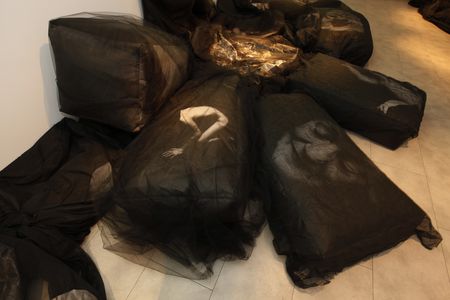
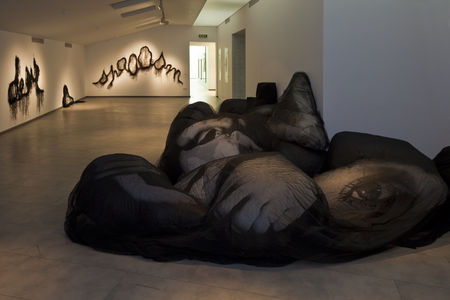


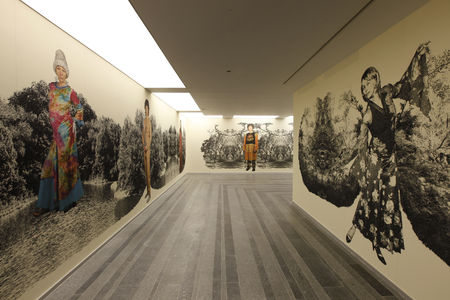







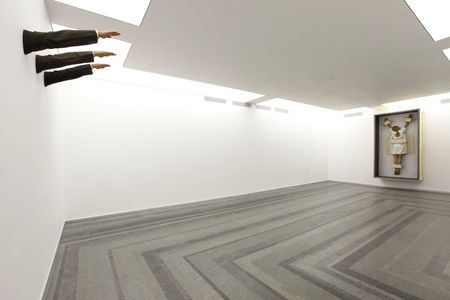
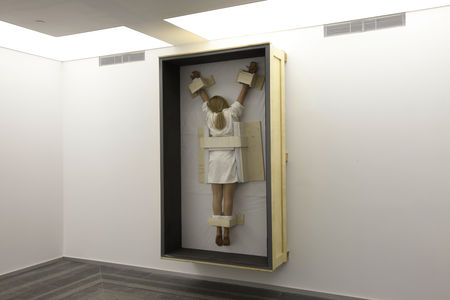


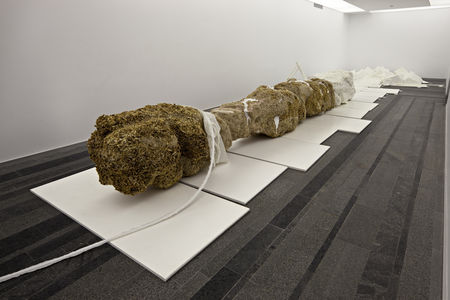



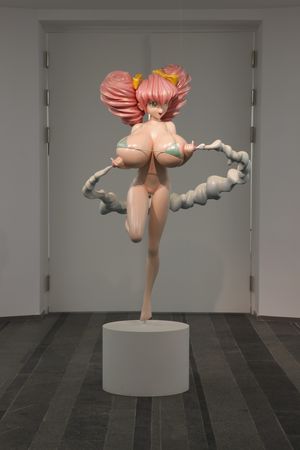



/http%3A%2F%2Fstorage.canalblog.com%2F22%2F56%2F119589%2F72204357_o.jpg)
/http%3A%2F%2Fstorage.canalblog.com%2F39%2F48%2F119589%2F127886773_o.png)
/http%3A%2F%2Fstorage.canalblog.com%2F75%2F03%2F119589%2F112784440_o.jpg)
/http%3A%2F%2Fstorage.canalblog.com%2F37%2F18%2F119589%2F94175103_o.jpg)